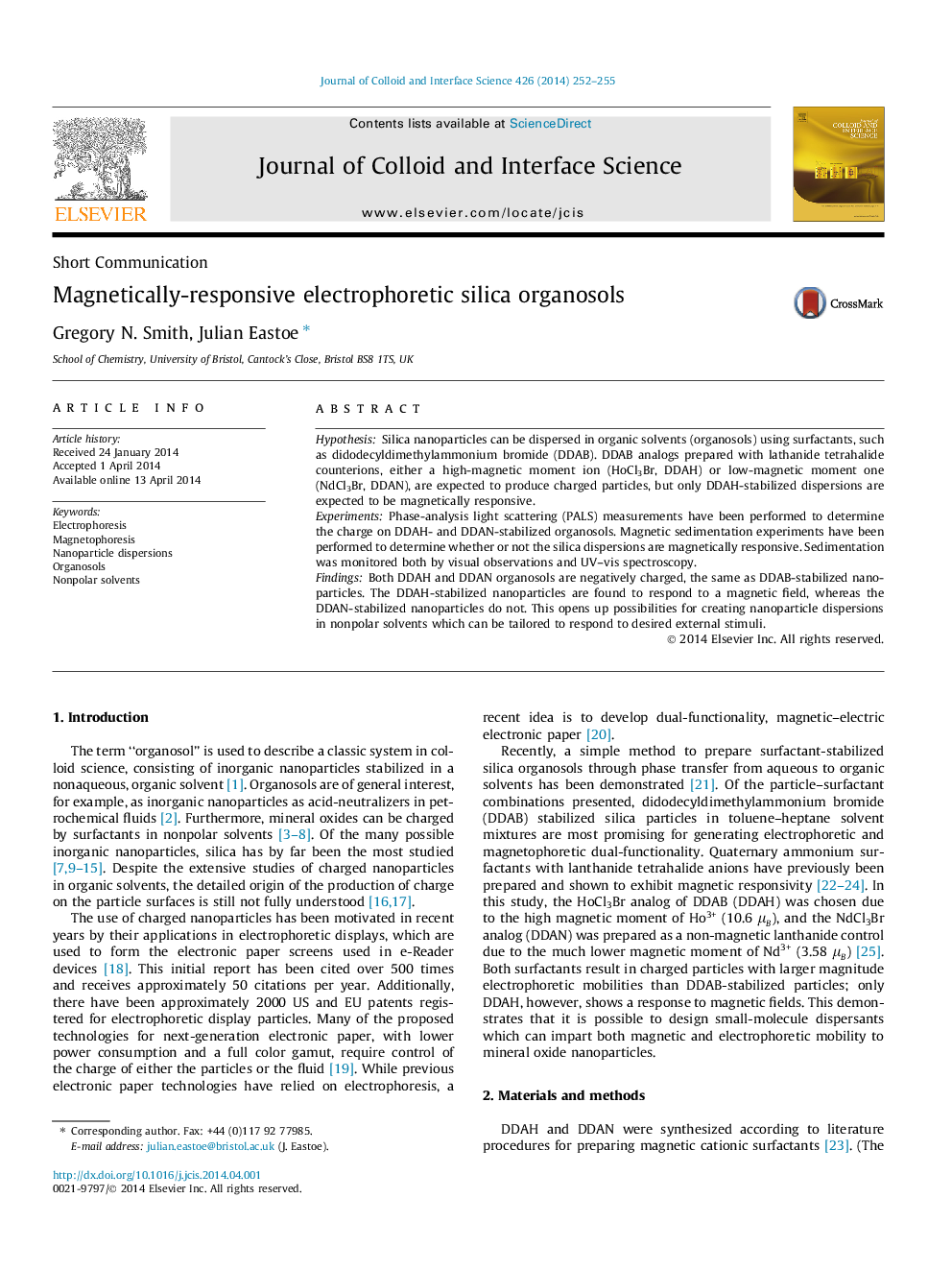| Article ID | Journal | Published Year | Pages | File Type |
|---|---|---|---|---|
| 6998313 | Journal of Colloid and Interface Science | 2014 | 4 Pages |
Abstract
HypothesisSilica nanoparticles can be dispersed in organic solvents (organosols) using surfactants, such as didodecyldimethylammonium bromide (DDAB). DDAB analogs prepared with lathanide tetrahalide counterions, either a high-magnetic moment ion (HoCl3Br, DDAH) or low-magnetic moment one (NdCl3Br, DDAN), are expected to produce charged particles, but only DDAH-stabilized dispersions are expected to be magnetically responsive.ExperimentsPhase-analysis light scattering (PALS) measurements have been performed to determine the charge on DDAH- and DDAN-stabilized organosols. Magnetic sedimentation experiments have been performed to determine whether or not the silica dispersions are magnetically responsive. Sedimentation was monitored both by visual observations and UV-vis spectroscopy.FindingsBoth DDAH and DDAN organosols are negatively charged, the same as DDAB-stabilized nanoparticles. The DDAH-stabilized nanoparticles are found to respond to a magnetic field, whereas the DDAN-stabilized nanoparticles do not. This opens up possibilities for creating nanoparticle dispersions in nonpolar solvents which can be tailored to respond to desired external stimuli.
Related Topics
Physical Sciences and Engineering
Chemical Engineering
Colloid and Surface Chemistry
Authors
Gregory N. Smith, Julian Eastoe,
